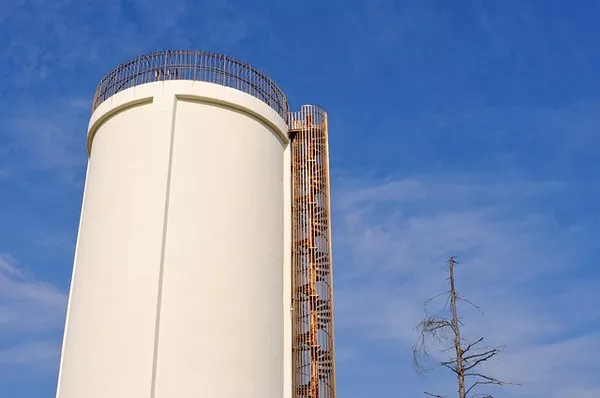Sewage treatment is a critical process for maintaining public health and environmental sustainability. Among the various methods employed, biological treatment stands out as a highly effective and environmentally friendly approach. By harnessing the power of microorganisms, biological treatment facilities can efficiently remove pollutants from wastewater, minimizing its impact on ecosystems and human health. This article explores the principles, processes, and benefits of biological sewage treatment, shedding light on its significance in modern wastewater management practices.
The Need for Sewage Treatment
Sewage, primarily consisting of domestic wastewater and industrial effluents, contains a complex mixture of organic and inorganic contaminants. If left untreated, sewage can pollute water bodies, degrade ecosystems, and pose serious health risks to humans and wildlife. Consequently, the treatment of sewage is essential to mitigate these adverse effects and safeguard public health and the environment.
Understanding Biological Treatment
Biological treatment is a sewage treatment process that relies on microorganisms to break down organic pollutants present in wastewater. This process occurs in specifically designed treatment facilities known as wastewater treatment plants (WWTPs). There are two main types of biological treatment: aerobic and anaerobic.
Aerobic Biological Treatment:
Aerobic treatment involves exposing wastewater to oxygen-rich environments where aerobic microorganisms metabolize organic matter. The most common aerobic process used in sewage treatment is activated sludge treatment. In this process, wastewater is mixed with a culture of microorganisms (activated sludge) in aeration tanks. The microorganisms consume organic pollutants as food sources, converting them into carbon dioxide, water, and biomass through biochemical reactions.
Another aerobic treatment method is the trickling filter process, where wastewater is distributed over a bed of porous material (such as rocks or plastic media) through which air is continuously passed. Microorganisms attached to the media surface degrade organic matter as wastewater trickles over them.
Anaerobic Biological Treatment:
Anaerobic treatment involves the degradation of organic pollutants in the absence of oxygen. Anaerobic microorganisms break down organic matter through biochemical processes such as fermentation and methanogenesis. The most common anaerobic process used in sewage treatment is anaerobic digestion, where organic matter is converted into biogas (methane and carbon dioxide) and stabilized sludge.
Key Processes in Biological Treatment
Biological treatment of sewage typically involves several key processes, each contributing to the overall efficiency of pollutant removal:
Pretreatment: Before biological treatment, sewage undergoes preliminary treatment processes such as screening and grit removal to remove large solids and debris that could interfere with subsequent treatment stages.
Primary Treatment: In primary treatment, physical processes such as sedimentation are employed to remove suspended solids and settleable particles from wastewater, reducing the organic load and improving the efficiency of biological treatment.
Biological Treatment: This is the core stage where microorganisms degrade organic pollutants present in wastewater. Depending on the treatment method (aerobic or anaerobic), specific reactor configurations and operating conditions are employed to optimize microbial activity and pollutant removal.
Secondary Treatment: Secondary treatment follows primary treatment and aims to further reduce the concentration of organic pollutants and nutrients in wastewater. This stage often involves biological processes such as activated sludge treatment, trickling filtration, or anaerobic digestion.
Tertiary Treatment: In some cases, tertiary treatment is employed to achieve additional pollutant removal or specific water quality targets. Advanced treatment technologies like membrane filtration, UV disinfection, and chemical precipitation may be utilized in tertiary treatment.
Benefits of Biological Sewage Treatment
Biological treatment offers several advantages over other sewage treatment methods, making it a preferred choice for many wastewater treatment facilities:
Environmental Sustainability: Biological treatment is a natural and sustainable approach that minimizes the use of chemicals and energy-intensive processes, reducing the carbon footprint of sewage treatment operations.
Effective Pollutant Removal: Microorganisms have a high affinity for organic pollutants, allowing for efficient removal of contaminants from wastewater streams. Biological treatment can achieve significant reductions in biochemical oxygen demand (BOD), suspended solids, and pathogens.
Biogas Production: Anaerobic digestion, a common anaerobic treatment process, produces biogas as a byproduct, which can be utilized as a renewable energy source for heating or electricity generation, contributing to resource recovery and waste-to-energy initiatives.
Nutrient Removal: Biological treatment processes can also remove nutrients such as nitrogen and phosphorus from wastewater, mitigating eutrophication and algal blooms in receiving water bodies.
Compliance with Regulations: Biological treatment facilities are capable of meeting stringent regulatory standards for effluent quality, ensuring compliance with environmental regulations and protecting receiving water bodies from pollution.
Challenges and Considerations
Despite its numerous benefits, biological sewage treatment faces certain challenges and considerations that warrant attention:
Process Complexity: Biological treatment processes require careful monitoring and control to optimize microbial activity and ensure consistent pollutant removal. Factors such as temperature, pH, and hydraulic retention time can influence treatment performance.
Sensitivity to Shock Loads: Biological treatment systems are sensitive to sudden changes in wastewater composition or flow rates, which can disrupt microbial communities and compromise treatment efficiency. Proper design and operational strategies are necessary to mitigate the effects of shock loads.
Energy Consumption: While biological treatment is generally less energy-intensive than chemical-based treatment methods, a significant amount of energy is still required for aeration, mixing, and sludge handling processes, particularly in aerobic treatment systems.
Sludge Management: Biological treatment generates a considerable amount of sewage sludge, which requires proper management to minimize environmental impact and ensure safe disposal or beneficial reuse.
See also What Is The Final Stage In Wastewater Treatment
Conclusion
Biological treatment of sewage plays a pivotal role in modern wastewater management practices, offering an effective and sustainable solution for pollutant removal and environmental protection. By harnessing the natural processes of microorganisms, biological treatment facilities can efficiently treat wastewater, minimize pollution, and contribute to resource recovery and energy generation. Continued research and innovation in biological sewage treatment will further enhance its efficiency, resilience, and environmental sustainability, ensuring the continued protection of water resources for future generations.

